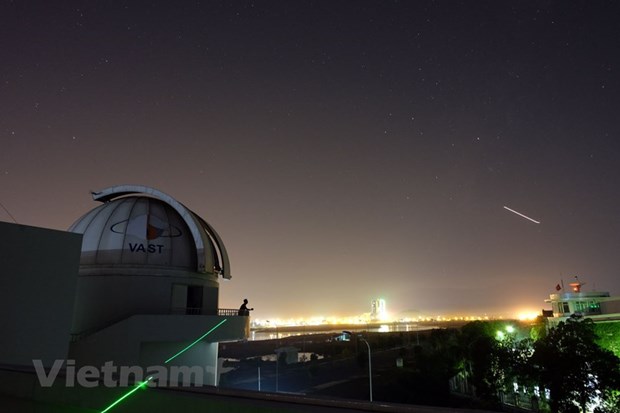Strategy issued for space science-technology development, application
Prime Minister Nguyen Xuan Phuc has signed off a strategy for the development and application of space science and technology by 2030.
 |
| The observatory based at the Hoa Lac Hi-Tech Park in the suburbs of Ha Noi (Photo: VNA) |
The strategy’s overall goal is to widely apply achievements of space science and technology; selectively invest in some areas related to national defence, security, and management of natural resources and the environment; and improve the country’s scientific and technological capacity, thereby helping to safeguard independence, sovereignty, unity, and territorial integrity, promote the development of all socio-economic aspects, and ensure other national interests.
Regarding the key areas for investment, the strategy targets that Viet Nam will work to master technologies for designing, producing, and integrating optical sensors and radars in earth observation satellites; assemble, integrate, and examine small satellites with high and very high resolution in the country; master technologies for designing and manufacturing terminal devices, earth stations controlling and collecting satellite data, along with transponders for telecommunication satellites; and develop Vietnam’s positioning and navigation capacity and reduce its dependence on existing global positioning systems.
In terms of space science and technology application, Viet Nam looks to proactively and opportunely supervise and assist the making of decisions in response to widespread natural and social changes within its territory, while providing a rich diversity of telecom, positioning, navigation, and warning services based on satellite data for its people.
Under this strategy, by 2030, the country will train about 300 experts and 3,000 engineers in space science and technology, upgrade about 10 specialised laboratories, and develop strong research groups on space science and technology and their application.
To achieve those targets, the strategy also pointed out the need to perfect the relevant legal framework, step up scientific research and technological development, and develop technical infrastructure, human resources, and the market.
Source: VNA